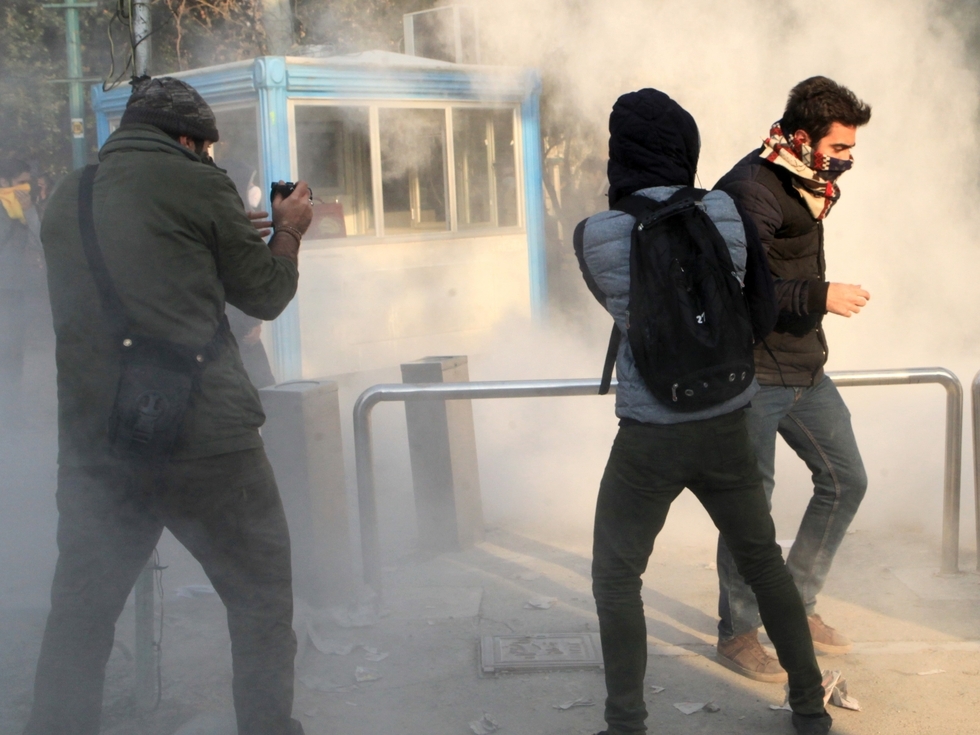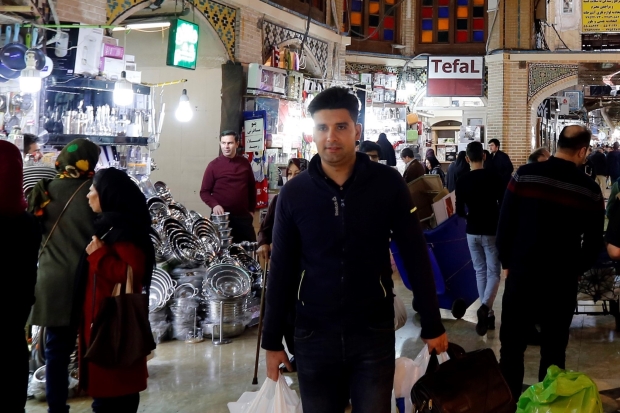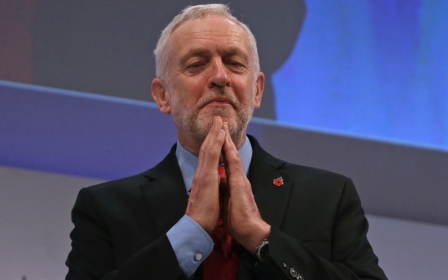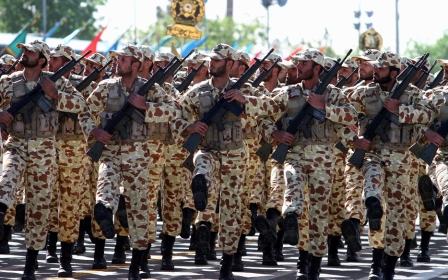How Western media got it wrong on Iran protests

Ever since scattered protests broke out in Iran last week, US President Donald Trump has taken time out of his busy schedule of threatening North Korea with nuclear annihilation to bombard Twitter with his eloquent assessments of "Iran, the Number One State of Sponsored Terror".
The gist of the Trumpian analysis is this: "The people of Iran are finally acting against the brutal and corrupt Iranian regime. The people have little food, big inflation and no human rights. The US is watching!"
A reductionist view
Never mind the ongoing huge pro-government demonstrations in Iran, or the fact that, if we want to talk about food, the US happens to be currently backing the forcible starvation of Yemen by Saudi Arabia and the United Arab Emirates (two entities that apparently don't require much "watching").
As usual, the dutiful Western media has laboured to uphold an appropriately reductionist view of Iran, a country that has long been in US crosshairs for its insistence on challenging imperial designs on the region.
In a 30 December dispatch for the Jadaliyya website, Eskandar Sadeghi-Boroujerdi, an Oxford-based historian of modern Iran, notes the speed at which concerned Western observers gleefully glom onto any peep of public discontent in the Islamic Republic:
"Within the space of some 24 hours [from the start of the protests], nearly every mainstream Western media outlet has inclined to assimilate legitimate expressions of socio-economic distress and demands for greater governmental accountability into a question of 'regime change'."
Iranian protests against unemployment and other legitimate internal grievances, Sadeghi-Boroujerdi continues, are almost inevitably depicted in terms of “a fundamental question of legitimacy about the system; which in turn can only be solved when said system is swept away in its entirety".
And there are, it seems, various ways to go about sweeping away systems. One possible approach is hinted at in The Iran Wars, a book by former Wall Street Journal correspondent Jay Solomon, who compiles some historical details regarding Israel's secret collaboration with the Mujahideen e-Khalq (MEK), the notorious Iranian group classified as a terrorist organisation by the US until 2012.
Neocon agitation
In the run-up to the Iraq invasion of 2003, Solomon writes, Israel's security and intelligence services became worried that Iran was being unfairly overlooked: "They not so subtly joked that the [George W] Bush administration had misinterpreted their comments and was getting ready to attack the wrong Middle East country that started with the letter I."
Enter Alireza Jafarzadeh, whom Solomon defines as "the US representative" of the MEK at the time, and who obligingly set about hyping the spectre of a nuclear Iran for the benefit of his Washington audience.
This is the same Jafarzadeh who has now surfaced at Fox News with a renewed call for US-backed regime change in Iran in light of the current protests.
And while Fox's proliferation of transparent drivel is of course par for the course, the US newspaper of record has also stepped up to the plate by providing a pedestal for neocon agitation.
A New York Times op-ed by Reuel Marc Gerecht, a senior fellow at the Foundation for Defence of Democracies, a pro-Israel outfit, praises Trump's series of tweets about the protests and prescribes US "rhetorical and material support" for Iranians chanting for "death to" their leaders.
Gerecht concludes that "the absolute worst thing that the United States can do for the Iranian people is to stay silent and do nothing".
To be sure, the US refusal to stay silent in Iran has always translated into wonderful things for the country's people, as shown during the 1953 CIA-orchestrated coup against democratically elected Prime Minister Mohammad Mossadegh.
US's deafening silence
In other more pampered global locales, on the other hand, US silence has been positively deafening. In Bahrain, for instance - which plays host to the US Navy’s Fifth Fleet - the monarchy's deadly repression of Shia protesters and the quashing of human rights have been met not with "US-is-watching" Twitter taunts from Trump but rather with arms sales.
Furthermore, Israel's regular slaughter of Palestinians and other assaults on human dignity have earned the apartheid state billions upon billions of dollars in annual US aid, while Palestinian forms of protest against brutality are criminalised across the board.
Case in point: Ahed al-Tamimi, the valiant 16-year-old currently imprisoned for slapping an Israeli soldier after her cousin was shot in the face with a rubber bullet.
If Tamimi were Iranian, one can easily imagine the Western media tripping over itself in impassioned tribute.
Now, as tens of thousands of Iranians have reportedly taken to the streets in support of the government, many outlets seem reluctant to let go of the appointed narrative, as suggested by headlines like "The protests in Iran appear to be dying down - but they're a sign the regime is getting weaker".
Meanwhile, facts on the ground have long contradicted the media’s dedicated oversimplification of the Iranian panorama.
During my own recent trips to Iran, I’ve encountered plenty of Iranians who apparently haven't gotten the memo that they require US "rhetorical and material support" to realise their individual or national aspirations.
The Iranian people
In Isfahan in late 2016, for example, I chatted with a bookseller named Hadi, who, while not overly thrilled with the whole concept of theocracy, speculated that the Iranian government was at least more well-intentioned than the US one when it came to attending to basic public needs.
In Tehran the previous year, I spoke with the father of Mostafa Ahmadi Roshan, a PhD student and nuclear scientist assassinated by car bomb in 2012 at the age of 32. According to his father, who despised the US government but not its people, he told me, Ahmadi Roshan had believed in a peaceful nuclear energy programme as a means of ensuring Iranian sovereignty.
Anyway, these guys clearly weren't "the Iranian people" the US is so good at detecting.
In a 2 January Reuters report, State Department spokeswoman Heather Nauert reiterated US support for the aforementioned people in the face of Iranian social media restrictions. "When a nation clamps down on social media or websites or Google or news sites," she said, "we ask the question: 'What are you afraid of?'"
Of course, the same question could be asked of the country that imprisons and tortures whistleblowers for exposing US atrocities - or that threatens its citizens with over 60 years of jail time for protesting Trump’s inauguration.
As for what anyone in their right mind should be afraid of, these include the fact that the US president is censored neither on social media nor in the physical realm and that obsequious mainstream commentators continue to delight in championing and justifying US violence abroad.
The regime-change crowd can swear all it wants that "the absolute worst thing that the United States can do for the Iranian people is to stay silent and do nothing". But there’s a whole lot of people wishing the US would sit down and shut up.
- Belen Fernandez is the author of The Imperial Messenger: Thomas Friedman at Work, published by Verso. She is a contributing editor at Jacobin magazine.
The views expressed in this article belong to the author and do not necessarily reflect the editorial policy of Middle East Eye.
Photo: Iranian students run for cover from tear gas at the University of Tehran during a demonstration on 30 December 2017 ( AFP)
New MEE newsletter: Jerusalem Dispatch
Sign up to get the latest insights and analysis on Israel-Palestine, alongside Turkey Unpacked and other MEE newsletters
Middle East Eye delivers independent and unrivalled coverage and analysis of the Middle East, North Africa and beyond. To learn more about republishing this content and the associated fees, please fill out this form. More about MEE can be found here.






